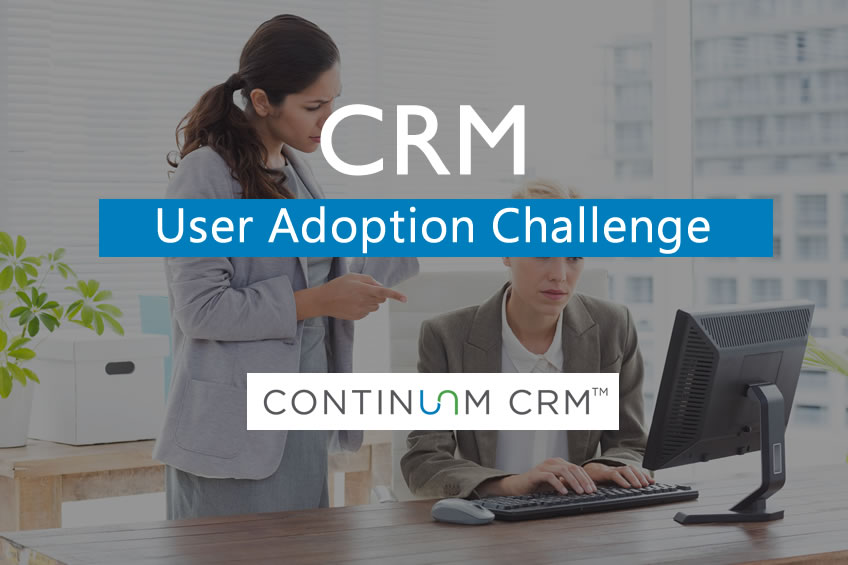
As I have seen firsthand in both my days as a Director of Sales at a CCRC, and now in training users who are implementing a new CRM, there is a constant battle with user adoption. From my experience, it boils down to three Issues. First, leadership’s failure to communicate why they need data, and how the collection of the information will benefit them. Second, the existence of departmental silos where marketing and sales are still not coming together in leveraging data to target qualified prospects. Third, poor training of the new system.
Here’s my take on why implementing a new CRM can be challenging and the vantage point of each user or team. However, if you want to cut the rhetoric and get to the gift, you can always just download our new guide: 5 Ways to Increase User Adoption.
Leadership needs Deep Dive Reports
Your leadership team knows to stay ahead of the competition, they need to measure more than conversion rates. High-level, strategic decisions are made based on data. The data comes from various sources, including your CRM. Without robust data your leadership team lacks transparency and strategic direction. They may have a vision of expanding service lines, re-positioning antiquated products, or new construction of residential units.
The best way to understand how to be successful in future endeavors is to have quantitative data on consumer demand. Who is best at obtaining that information? Your sales team. They are your first line of offense when it comes to knowing what your future resident is seeking.
The perception may be that the leadership team is asking sales and marketing to collect too much information on prospects. Most times I see this as a lack of communication from the top-down.
Marketing needs Demographics and Psychographics
If the sales team wants more qualified leads, they need to understand that you cannot blanket your target area with campaigns and hope the phone rings. Hope is not a strategy. To get truly qualified leads, you need targeted campaigns with targeted demographics and psychographics.
Your marketing team spends big dollars to generate leads. In turn, the sales counselor needs to follow up. What if 50% of the leads are duds? What does that do to the sales counselor? It’s demotivating. Who wants to spend 50% of their work hours calling unqualified leads? Without solid information on effective lead generation the marketing team is spending blindly.
Documenting lead sources, calls on dedicated lines, responses to direct mail, ad campaigns, email marketing tracking, event attendance, and post campaign re-inquiry accurately and consistently gives the marketing department the ability to spend money on campaigns that produce results.
The marketing team also needs to use the CRM, as opposed to waiting for report information to be presented in meetings. If you want more information on why, download our free guide CRM for the Marketing Team.
Sales just wants to Build Relationships
Even though they use the CRM more than anyone else, sales people don’t really want it, or see the value in having a CRM. Without being armed with knowledge of how it is used to help make their job easier, the CRM can be seen as a nuisance and just something the team “has to use” because they’re being told to.
Sales people are used to old legacy systems, and change is difficult for anyone. Compound that with a lack of time and resources, and the implementation of your new CRM could spell disaster without proper training. Think about the last time there was a major upgrade to Microsoft Office™ products. I don’t know about you, but I felt like I was trying to self-teach a whole new software system. It’s frustrating.
Your sales team doesn’t want to spend hours trying to figure out how to do input all the data into the CRM. The bottom line is sales people just want to sell. However, if you tell them how the collection of data will help them increase sales, save them time, and make their job more rewarding, you’re more apt to get their buy in, and a better result.
Your company’s CRM tool is so much more than an activity tracker. It’s a major strategic planning tool. Bring your sales team into the fold of management. Uncover all the possibilities that directly impact the quality of leads they receive. Provide them with the vision of how it can improve the organizations bottom line, their performance, and quite possibly, their paycheck.
Share leadership’s strategy for success and growth with sales. Then, you’ll have a data driven sales team eager to gather information you need. Download our free guide “5 Ways to Increase User Adoption” or to learn more about how Continuum CRM can help your organization be more data-driven, feel free to visit our website www.continuumcrm.com or call us at 800-570-6030.